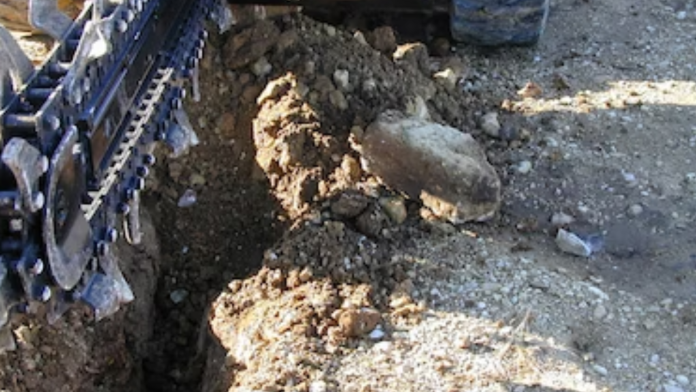Trenchers are specialized construction machines designed to excavate trenches, which are narrow and deep channels in the ground. These trencher parts serve various purposes, including laying utility lines, installing drainage systems, creating foundations, or any application requiring deep, linear excavation. Trenchers are valuable tools in construction, landscaping, agriculture, and utilities due to their efficiency and precision in creating trenches of specific dimensions.
Trenchers are powerful excavation machines used for creating trenches in the ground for various purposes, such as installing utilities, irrigation systems, or drainage solutions. The efficiency and functionality of trenchers depend on the quality and performance of their parts.
Key Parts of Trencher
Here, we will discuss some of the key trenching parts and their advantages in trenching operations.
Cutting Chain
The cutting chain is a critical component of a trencher, responsible for the excavation process. Its design and construction impact the machine’s ability to efficiently cut through different soil types. Different cutting chain designs are available to suit various soil conditions, making the trencher adaptable to different terrains and projects. Many modern trenchers feature a modular cutting chain design, allowing for easy replacement of individual chain sections or teeth, reducing downtime and maintenance costs.
Teeth or Cutting Bits
Trencher’s teeth are designed for precision cutting, allowing for the creation of trenches with accurate dimensions. High-quality teeth made from durable materials, such as carbide, provide extended wear resistance, reducing the frequency of replacements and associated costs. Various tooth designs cater to soil conditions and project requirements, ensuring versatility in trenching applications.
Auger or Conveyor System
The auger or conveyor system removes excavated material from the trench, maintaining a clean and efficient work environment. Efficient material handling systems contribute to continuous trenching operations without requiring frequent interruptions to manually clear debris. Automated material removal reduces the need for manual labor in clearing the trench, enhancing overall efficiency.
Hydraulic System
The hydraulic system powers various components of the trencher, providing the force necessary for efficient cutting and excavation. Hydraulic systems offer the flexibility to adjust cutting speed, depth, and other parameters, allowing operators to adapt to different soil conditions and project requirements. Well-designed hydraulic systems contribute to smooth and controlled trenching operations, minimizing jerky movements and ensuring precision.
Undercarriage and Tracks or Wheels
The undercarriage, whether equipped with tracks or wheels, determines the trencher’s mobility. Tracks provide stability on uneven terrain, while wheels offer agility in certain applications. Different undercarriage options allow trenchers to operate effectively in diverse terrains, from soft soils to rocky surfaces. Advanced undercarriage designs incorporate features for operator comfort, including reduced vibrations and improved stability during operation.
Control System
An intuitive and user-friendly control system enhances operator convenience, allowing for precise control over the trenching process. Advanced control systems may include automation features, such as depth control and digital displays, improving the accuracy and efficiency of trenching operations. The incorporation of safety features in the control system ensures the well-being of operators and minimizes the risk of accidents during trenching.
Frame and Chassis
The frame and chassis provide the structural integrity of the trencher, supporting and securing all components during operation. A robust frame and chassis construction contribute to the overall durability of the trencher, ensuring longevity even in challenging working conditions. A well-designed frame includes safety features to protect operators from potential hazards during trenching operations.
Trench Cleaner
The trench cleaner is responsible for removing excess soil and debris from the trench, preventing material buildup that could impede further cutting. Efficient trench cleaning ensures that the trench remains well-defined and prevents contamination of the excavated material. A well-designed trench cleaner minimizes the risk of clogging, allowing for continuous and uninterrupted trenching.
Sum Up
Each trencher part plays a vital role in the overall functionality and efficiency of the trenching machine. The advantages of these components collectively contribute to the trencher’s ability to perform precise and effective trenching operations across various applications and working conditions. Investing in high-quality trencher parts ensures reliable performance, reduces downtime, and enhances the overall productivity of trenching projects.














